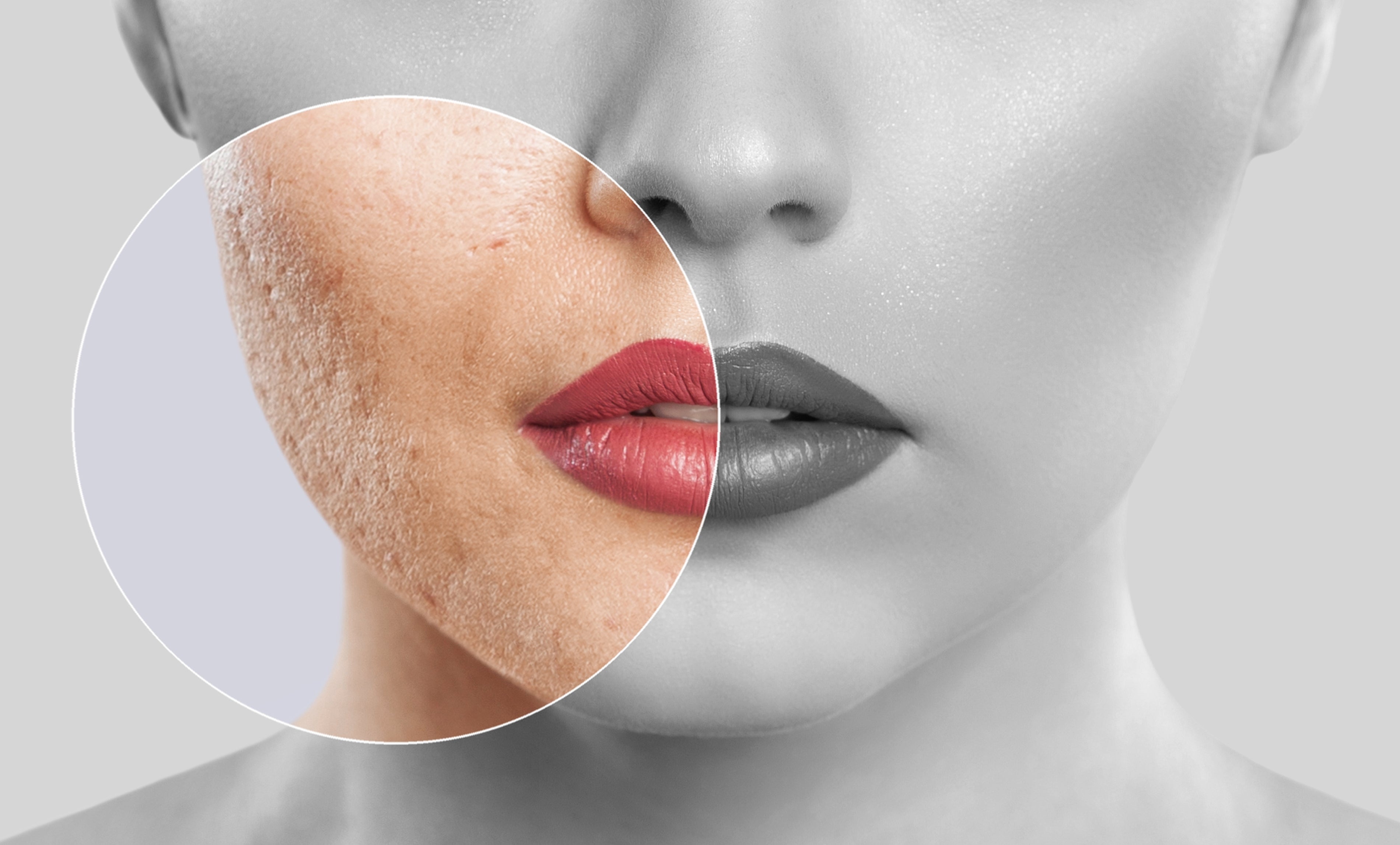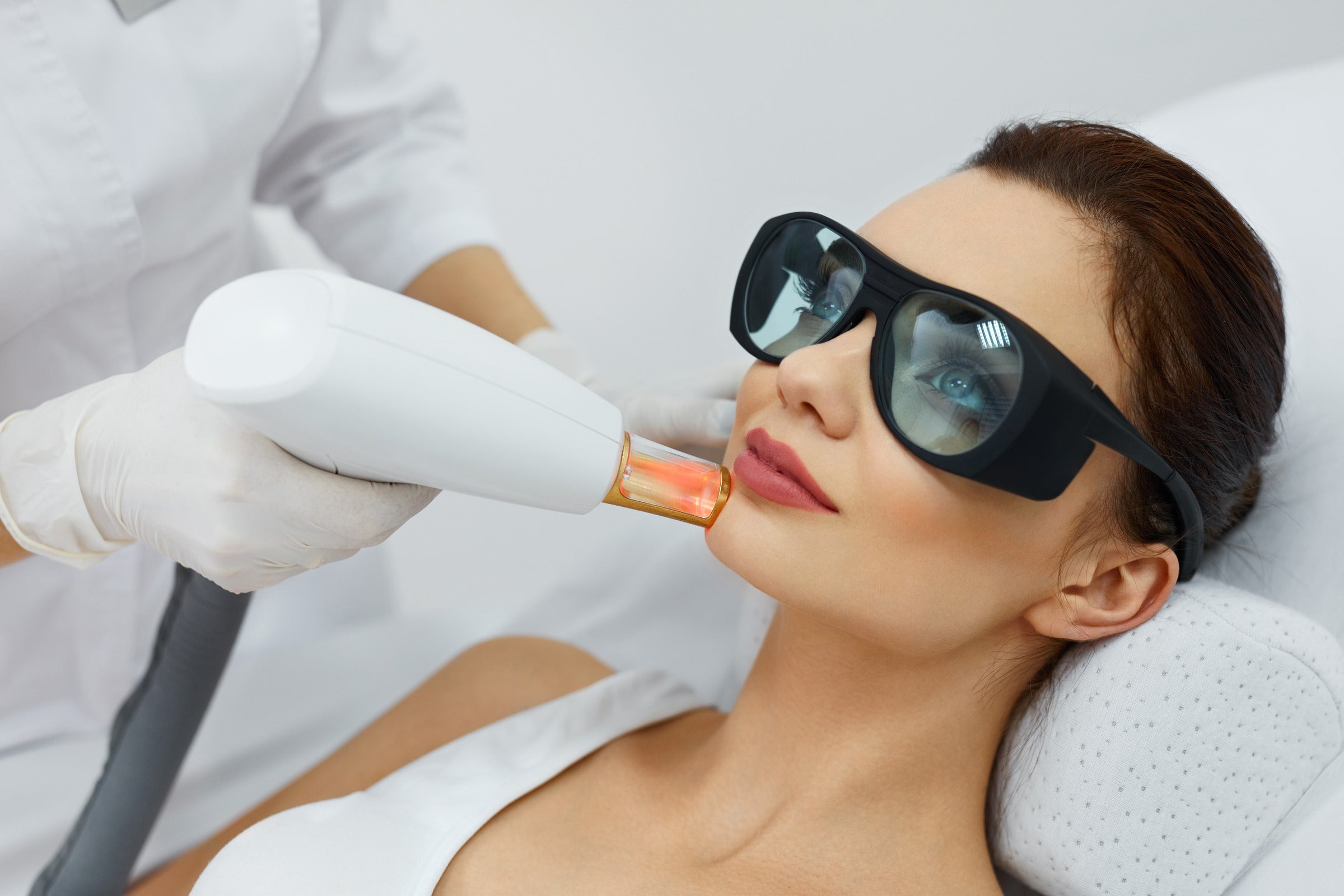Laser skin resurfacing may be precisely what you need. This procedure uses targeted beams of light to treat damaged skin, reduce signs of aging, and enhance skin texture and tone. Like any medical intervention, it comes with benefits and risks.
The laser skin resurfacing procedure is safe and effective for many men and women. The candidate should have moderate to severe aging symptoms. You know, things like redness, scarring, or uneven texture.
In this blog post, we will explore the advantages and disadvantages of this treatment and the factors that affect its results. By the end of this article, you will better understand whether laser skin resurfacing is the right choice for you.
Is Laser Good or Bad for Skin Resurfacing: 4 Advantages

Laser skin resurfacing enhances skin appearance and health. Despite potential risks, the numerous benefits should be noticed. We will focus on the advantages of laser skin resurfacing, which include.
Reduction of Wrinkles and Fine Lines
Laser skin resurfacing offers significant benefits in reducing wrinkles and fine lines, providing a smoother and more youthful appearance:
- Wrinkle Reduction: Laser treatment effectively reduces the depth and visibility of wrinkles, especially around the eyes and mouth.
- Fine Line Softening: It softens fine lines on the skin's surface, giving a smoother texture and a more youthful look.
- Stimulates Collagen Growth: The laser stimulates collagen production, improving skin elasticity and minimizing wrinkles.
- Long-lasting Results: The effects of reduced wrinkles can last for a long time, contributing to a sustained youthful appearance.
- Customizable Treatment: Laser resurfacing treatments can be adjusted based on the intensity of wrinkles, ensuring personalized results.

Elimination of Scars and Blemishes
Laser skin resurfacing is effective in reducing scars and blemishes, leading to improved skin appearance:
- Scar Fading: The laser helps fade scars from acne, injuries, or surgeries, making them less visible.
- Reduction of Hyperpigmentation: It lightens areas of hyperpigmentation, resulting in a more even skin tone.
- Minimized Acne Marks: Laser treatment can reduce acne marks and scars, giving a smoother complexion.
- Boosts Confidence: Reducing visible scars boosts confidence and self-esteem, allowing individuals to feel more comfortable in their skin.
- Safe and Non-invasive: Laser treatment is a safe and non-invasive way to improve the appearance of scars without surgery.
Improvement of Skin Texture and Tone
Laser skin resurfacing can significantly enhance the skin's texture and tone:
- Texture Refinement: Laser treatment smoothens rough skin texture, making it softer and more pleasant to touch.
- Reduction of Pores: It minimizes the appearance of enlarged pores, resulting in a finer and smoother complexion.
- Even Skin Tone: Laser resurfacing helps achieve a more even skin tone, reducing redness and discoloration.
- Improves Skin Elasticity: The treatment enhances skin elasticity, giving a youthful and supple look.
- Rejuvenates Dull Skin: It revitalizes dull skin, providing a fresher and healthier appearance.
Boost in Collagen Production

Collagen production is stimulated through laser skin resurfacing, providing several benefits for skin health:
- Firms and Tightens Skin: Increased collagen levels lead to firmer and tighter skin, reducing sagging.
- Reduces Wrinkles and Fine Lines: collagen boost diminishes the appearance of wrinkles and fine lines, promoting a youthful look.
- Enhances Skin Hydration: Collagen improves the skin's ability to retain moisture, keeping it hydrated and plump.
- Heals Skin Damage: Laser-induced collagen production helps heal skin damage and scars more effectively.
- Improves Skin Resilience: Collagen makes the skin more resilient, helping it withstand environmental stressors.
Does Laser Resurfacing Good or Not: 4 Disadvantages
While laser skin resurfacing can provide many benefits, it's essential to be aware of the potential disadvantages and side effects associated with the procedure.
Pain and Discomfort during the Procedure
Laser skin resurfacing may cause discomfort and pain during and after the treatment. Here's what to consider:
- Treatment Discomfort: The procedure can be uncomfortable, often described as feeling like a snapping rubber band or a warm sensation on the skin.
- Local Anesthesia: Local anesthesia or numbing creams minimize pain, but some discomfort may still be felt.
- Recovery Period: After the treatment, there might be some pain and tenderness, which can last for a few days.

Temporary Redness, Swelling, and Itching
Following laser skin resurfacing, you may experience temporary side effects that affect the appearance and comfort of your skin:
- Redness: The skin can appear red, similar to a sunburn, which usually lasts several days.
- Swelling: Some swelling, particularly around the treated area, is joint and typically subsides within a few days.
- Itching and Peeling: Itching and peeling of the treated skin can occur during the healing process, which may be slightly uncomfortable.
Increased Sensitivity to Sunlight
One of the disadvantages of laser skin resurfacing is an increased sensitivity to sunlight, which can have its own set of challenges:
- Sun Avoidance: After the procedure, you must avoid direct sunlight and use sunscreen regularly to protect your skin.
- Risk of Sunburn: Skin more sensitive to sunlight is at a higher risk of sunburn, which can lead to skin damage.
- Extended Sun Sensitivity: Increased sunlight sensitivity can last several weeks or months post-procedure.
Risk of Infection and Scarring

Laser skin resurfacing carries a risk of infection and scarring, though it's relatively low with proper care:
- Infection Risk: There's a slight risk of infection, particularly if post-treatment care instructions are not followed diligently.
- Potential Scarring: While scarring is rare, it can occur exceptionally if the treated area is not cared for properly during the healing process.
- Professional Expertise: Choosing an experienced professional can significantly reduce the risk of complications.
Does Laser Work for Skin Resurfacing: 5 Factors to Consider
If you are considering laser skin resurfacing, one of the most important factors to consider is the impact of various factors on your treatment outcome. While several variables come into play, four key factors can make all the difference in your laser skin resurfacing success. Let's explore each one of them in greater detail.
Skin Type and Texture
Your skin type and texture are significant determinants of the effectiveness of a laser skin resurfacing treatment. Believe it or not, there is no "one-size-fits-all" approach to laser resurfacing. The laser type used must be customized to your skin type and texture.
- If you have fair, thin skin, you'll require a less powerful laser to avoid damaging your skin.
- If you're darker-skinned, your skin may require a high-intensity laser for effective treatment.
- Fraxel laser resurfacing may be more suitable for those with textured skin.

Skin Condition and Age
Skin age and condition also play a significant role in the success of laser skin resurfacing treatment.
- You may need several treatments if you have deep wrinkles, scars, or even pigmentation.
- A laser can effectively treat fine lines, age spots, sun damage and scarring, and uneven skin tone.
- It is recommended to undergo a skin assessment to determine the viable options to address any concerns.
Laser Type and Intensity
The type of laser you choose, and its intensity level will dictate your laser skin resurfacing results.
- Intense pulsed light (IPL), carbon dioxide (CO2), erbium, and fractional infrared (Fraxel) lasers are the most appropriate for laser skin resurfacing.
- The intensity level would depend on the skin conditions being treated and the skin's texture.
Experience and Skill of the Practitioner
An experienced and knowledgeable practitioner is essential when considering skin resurfacing. A highly trained and experienced practitioner can guide you through the treatment process and manage any concerns or complications that may arise.
Assessment and Consultation Lead to Final Decision

Depending on various factors, laser skin resurfacing may or may not be the right choice for you. Here's how to make an informed decision:
- Assess Your Goals: Consider what you want to achieve with the treatment, whether it's reducing wrinkles, improving skin texture, or addressing scars.
- Consult a Professional: Schedule a consultation with a qualified dermatologist or skincare professional to discuss your goals and concerns.
- Understand the Procedure: Gain a clear understanding of the procedure, its benefits, potential risks, and the expected recovery period.
- Discuss Health History: Share your medical history and any existing skin conditions or allergies with the professional to ensure safety and suitability.
- Consider Alternatives: Explore alternative treatments and compare them with laser skin resurfacing to make an informed decision.
- Weigh the Pros and Cons: Based on your assessment and consultation, evaluate the advantages and disadvantages of laser skin resurfacing.
- Consider Budget and Time: Factor in the procedure's cost and the time required for recovery in line with your budget and schedule.
- Listen to Recommendations: Pay attention to the advice and recommendations provided by the professional based on your specific skin condition and needs.
- Make an Informed Choice: After careful consideration and gathering all necessary information, decide if laser skin resurfacing aligns with your goals and preferences.
Conclusion
The verdict on whether laser skin resurfacing is good or bad cannot be generalized as it depends on personal circumstances and expectations. Although the advantages are significant, the disadvantages cannot be overlooked. It is essential to weigh the pros and cons and decide based on your skin type, condition, and age.
Consulting with a reliable practitioner can help you make an informed decision. The use of lasers in skin resurfacing has sparked controversy. Still, with adequate knowledge, responsible service, and proper execution, it can undoubtedly provide remarkable results, bringing you one step closer to the skin of your dreams.











![The Most Common Food Allergies That Cause Itchy Skin [6 Common Symptoms]](http://drnumb.com/cdn/shop/articles/Can_Food_Allergies_Cause_Itchy_Skin__17_Listed_6_Symptoms_Common.jpg?v=1714999986)



